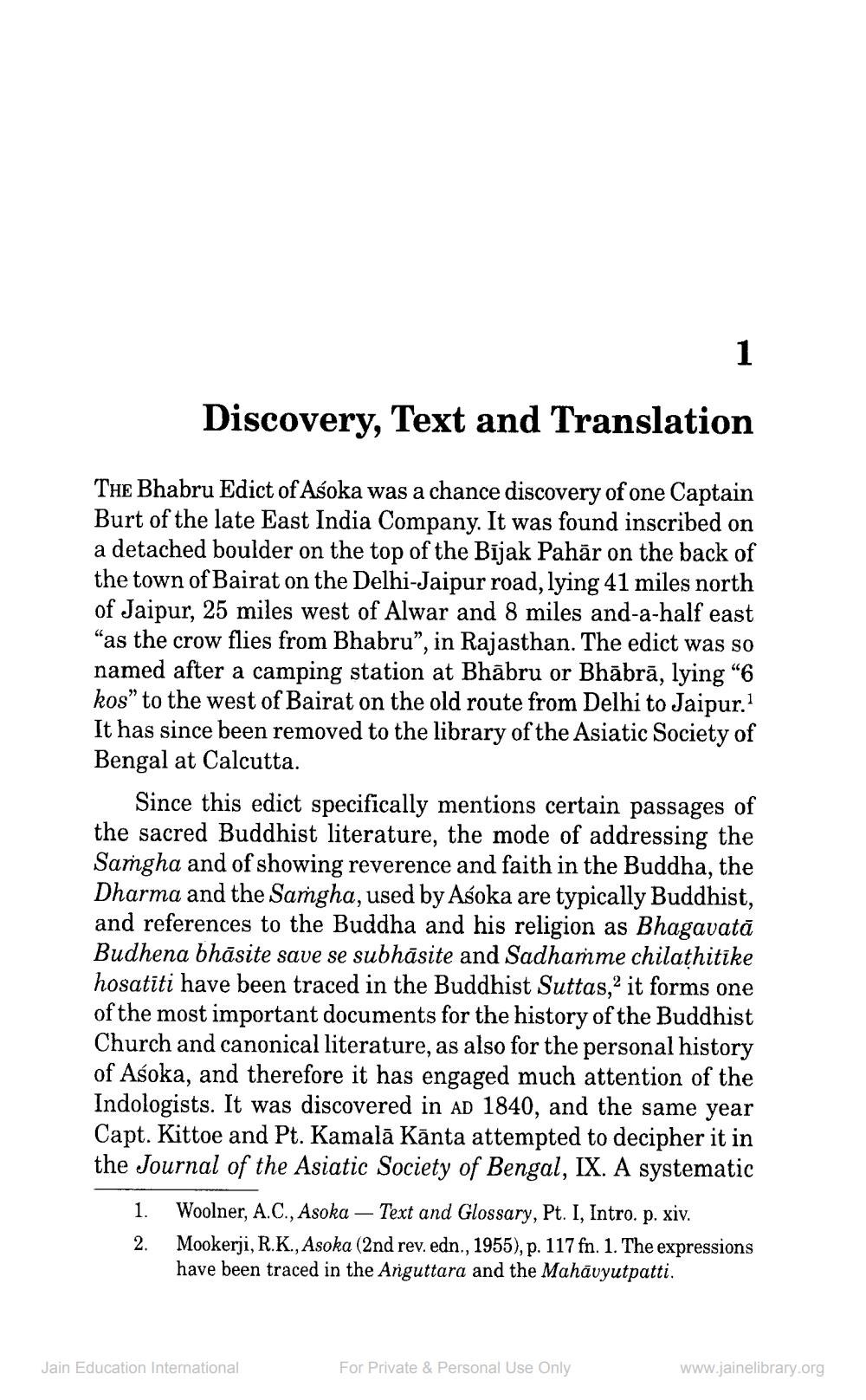________________
Discovery, Text and Translation
THE Bhabru Edict of Asoka was a chance discovery of one Captain Burt of the late East India Company. It was found inscribed on a detached boulder on the top of the Bījak Pahār on the back of the town of Bairat on the Delhi-Jaipur road, lying 41 miles north of Jaipur, 25 miles west of Alwar and 8 miles and-a-half east “as the crow flies from Bhabru”, in Rajasthan. The edict was so named after a camping station at Bhābru or Bhābrā, lying “6 kos" to the west of Bairat on the old route from Delhi to Jaipur. It has since been removed to the library of the Asiatic Society of Bengal at Calcutta.
Since this edict specifically mentions certain passages of the sacred Buddhist literature, the mode of addressing the Samgha and of showing reverence and faith in the Buddha, the Dharma and the Samgha, used by Asoka are typically Buddhist, and references to the Buddha and his religion as Bhagavatā Budhena bhāsite save se subhāsite and Sadhaṁme chilathitike hosatiti have been traced in the Buddhist Suttas,it forms one of the most important documents for the history of the Buddhist Church and canonical literature, as also for the personal history of Asoka, and therefore it has engaged much attention of the Indologists. It was discovered in ad 1840, and the same year Capt. Kittoe and Pt. Kamalā Kānta attempted to decipher it in the Journal of the Asiatic Society of Bengal, IX. A systematic 1. Woolner, A.C., Asoka — Text and Glossary, Pt. I, Intro. p. xiv.
Mookerji, R.K., Asoka (2nd rev. edn., 1955), p. 117 fn. 1. The expressions have been traced in the Anguttara and the Mahāvyutpatti.
2.
Jain Education International
For Private & Personal Use Only
www.jainelibrary.org




